Cham-Glam2016
New Member
New dad for Cham “Pinkie-Pie” I’ve been building a habitat for the little Cham. I’ve used white-furniture pine, that I sealed in foodsafe beeswax. All the foliage is real and researched, minus some twisting vines, and some of the foliage wrapped around the vines.
I have two lighting systems, due to the habitat being 6ft 7in. I’m using 100watt UVA and lower UVB, with an addition of a lunar bulb. The bottom is sealed with both good safe beeswax, but also flex seal tape, then covered in 2-6mil plastic construction bags and then newspaper and plants.
All the hardware has been sealed with the same food safe beeswax.
The plants in are Pothos, two of them, one large and one small, Yucca tree, creeping fig, hibiscus and various-sterile moss varieties to aid in both adhesion and humidity levels, all rinsed and re-planted with organic soil.
The whole installation piece has been allowed to air out for a week, then sealed with the beeswax.
I’ve used animal-proof screen for the surrounding walls, but a thicker guage aluminum for the top. The top has a modified basket hanger hook, to hold the lights above. I bought the Reptizoo Mister, so far, not impressed, but I need to tweak a few things on it, and waiting on some missing parts from the company, also a fogger and I must multiple times a day. I have a humidity guage and temperature guage as well. He has lots of hiding spots and climbing area, some vertical. I’ve been consuming as much info on my little man since he chose me at the store. His colors are beautiful, and he greets me like a puppy for green-hornworms, they’re his favorite. Any info and opinions that improve “Pinkie-pie’s” life are accepted graciously.



I have two lighting systems, due to the habitat being 6ft 7in. I’m using 100watt UVA and lower UVB, with an addition of a lunar bulb. The bottom is sealed with both good safe beeswax, but also flex seal tape, then covered in 2-6mil plastic construction bags and then newspaper and plants.
All the hardware has been sealed with the same food safe beeswax.
The plants in are Pothos, two of them, one large and one small, Yucca tree, creeping fig, hibiscus and various-sterile moss varieties to aid in both adhesion and humidity levels, all rinsed and re-planted with organic soil.
The whole installation piece has been allowed to air out for a week, then sealed with the beeswax.
I’ve used animal-proof screen for the surrounding walls, but a thicker guage aluminum for the top. The top has a modified basket hanger hook, to hold the lights above. I bought the Reptizoo Mister, so far, not impressed, but I need to tweak a few things on it, and waiting on some missing parts from the company, also a fogger and I must multiple times a day. I have a humidity guage and temperature guage as well. He has lots of hiding spots and climbing area, some vertical. I’ve been consuming as much info on my little man since he chose me at the store. His colors are beautiful, and he greets me like a puppy for green-hornworms, they’re his favorite. Any info and opinions that improve “Pinkie-pie’s” life are accepted graciously.
Attachments
-
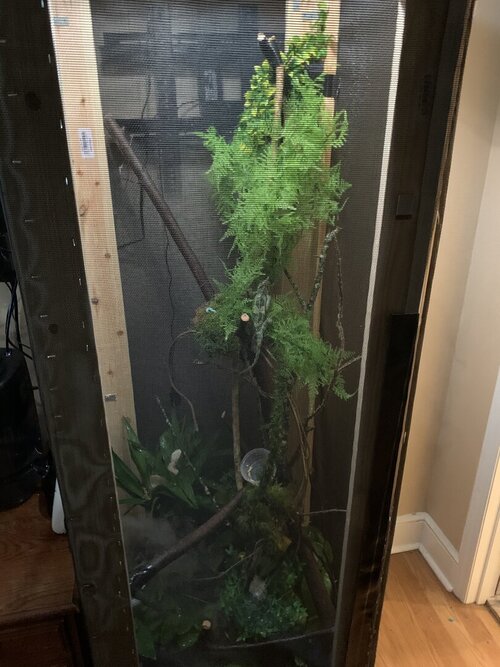 B554FB07-EF92-4E7A-ABB1-FBCBB461353B.jpeg187.2 KB · Views: 117
B554FB07-EF92-4E7A-ABB1-FBCBB461353B.jpeg187.2 KB · Views: 117 -
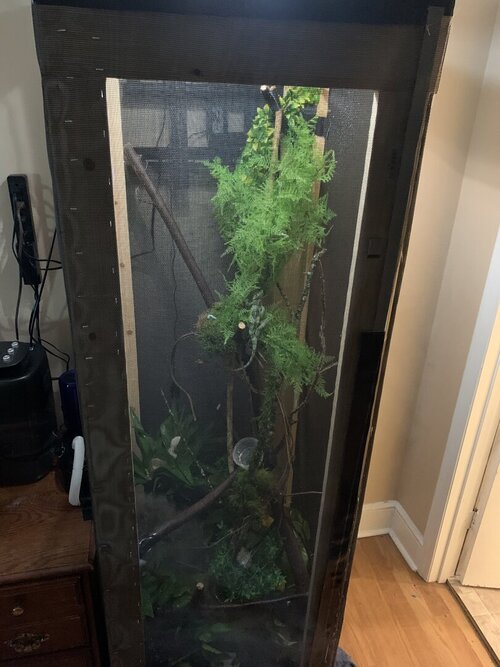 1BA8708E-B451-4512-9397-BED65C91A4CA.jpeg158.2 KB · Views: 116
1BA8708E-B451-4512-9397-BED65C91A4CA.jpeg158.2 KB · Views: 116 -
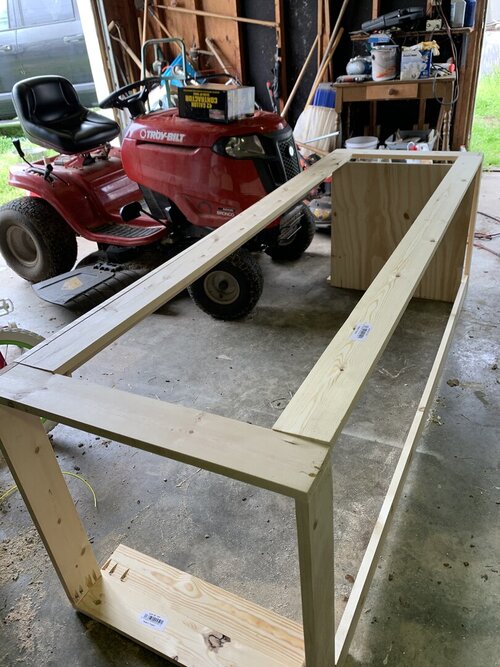 B1CF9EF9-B1E9-4ACE-B249-1EB86D3E7BF9.jpeg204.6 KB · Views: 112
B1CF9EF9-B1E9-4ACE-B249-1EB86D3E7BF9.jpeg204.6 KB · Views: 112 -
 E20B9161-3AB9-4A5B-9DBE-3635F5354945.jpeg80.4 KB · Views: 104
E20B9161-3AB9-4A5B-9DBE-3635F5354945.jpeg80.4 KB · Views: 104 -
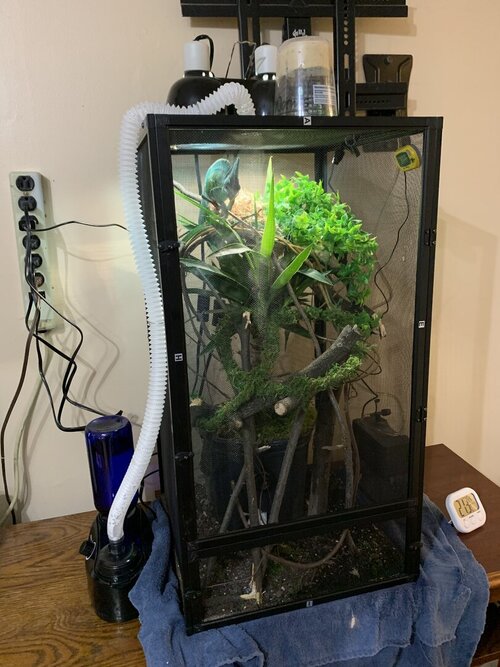 609FA6D2-C372-422F-9BEF-7323C47BE97B.jpeg173.7 KB · Views: 102
609FA6D2-C372-422F-9BEF-7323C47BE97B.jpeg173.7 KB · Views: 102 -
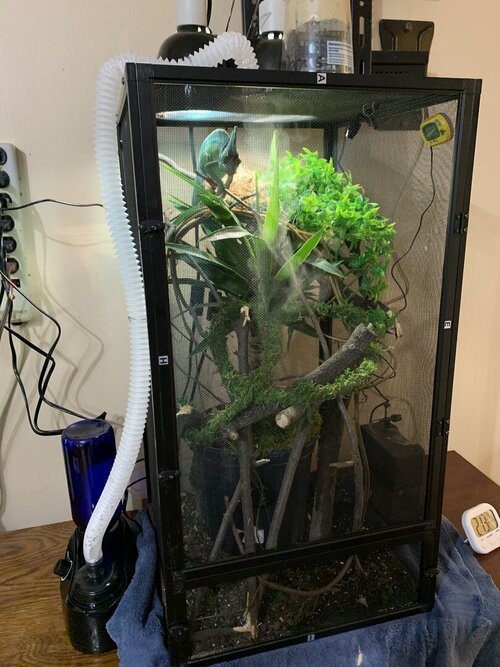 D3D5D517-4697-445E-A6F1-67AC4A589582.jpeg193.6 KB · Views: 110
D3D5D517-4697-445E-A6F1-67AC4A589582.jpeg193.6 KB · Views: 110
Last edited:


